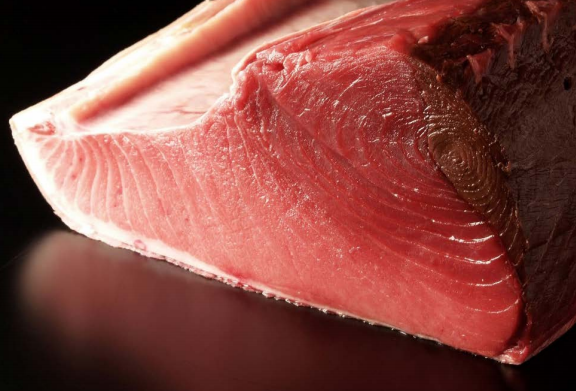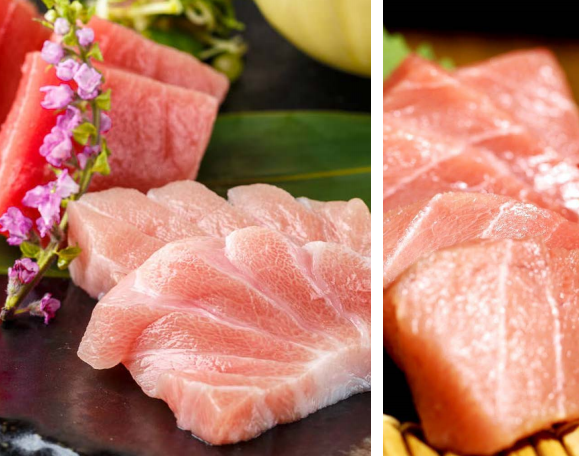

TOP-CLASS DELICACIES THAT WORTH LARGE AMOUNT OF MONEY
Tuna has long been a favorite food of gourmets. In ancient Rome, the fat belly of tuna was considered as a delicacy. So is in today's Japanese cuisine. The belly with pink color and luster, which melts on the tongue, is the top delicacy in the eyes of many gourmets. Like other marine fish, tuna is rich in delicious amino acids in order to balance the saltiness of the seawater. Glutamic acid is the source of umami, while glycine gives the fish a sweet taste. Generally speaking, the saltier the seawater is, the more delicious the fish is. As a result, bluefin tuna, which are growing in high-salinity ocean waters, tend to be extremely tasty.
The tastes of different parts of tuna are diversified. The top-notch belly of a bluefin tuna is extremely fat, which can be regarded as the supreme delicacy compared with other fish. Now lean meat is getting more and more popular, thus lean meat on the back of a tuna has captured the taste buds of countless foodies due to its pliable and chewy mouthfeel and slight-sour taste.

As a large predator in the ocean, a tuna can weigh up to 600 kilograms. In order to swim constantly, its muscle contains a lot of myoglobin, which gives the tuna meat a distinctive dark red color and fragrant aroma of meat, the same as beef. As a result, the ways of handling the two ingredients have a lot in common.
When a tuna is caught to a boat, the fishermen will quickly break the spine of the fish which kill it instantly, in order to prevent the quality of meat from changing for the worse as it struggles excessively. The body of bluefin tuna is usually large, so there is a process the same as beef for acid removal after fishing. By removing the acid, the stiff reaction of tuna after death can be alleviated, and the fish will become more delicious and taste softer. Usually, it takes 2-3 days of acid removal for a large bluefin tuna to reach the most delicious status.

In addition to acid removal, tuna will be treated in a process called Aging similar to that of high-end steak. The treatment must be proceed at extremely precise temperature and humidity. Low temperature can inhibit the growth of microorganisms, while the water of the meat will slowly evaporate at an environment with proper humidity, making the meat firmer. During the long aging period, the meat develops a richer meat flavor and a new aroma.
It takes a lot of energy and labors to complete the aging of fish meat. The meat will lose at least 20 percent of its weight due to water evaporation. In addition, cooks should always pay attention to excise the corrupt, toughen and moldy parts from the meat. Usually, there will be not much left in the meat after two weeks of aging, but its taste has changed dramatically. As a result, a aged tuna, like a aged steak, is often prohibitively expensive. Generally, it is served only in high-class restaurants.